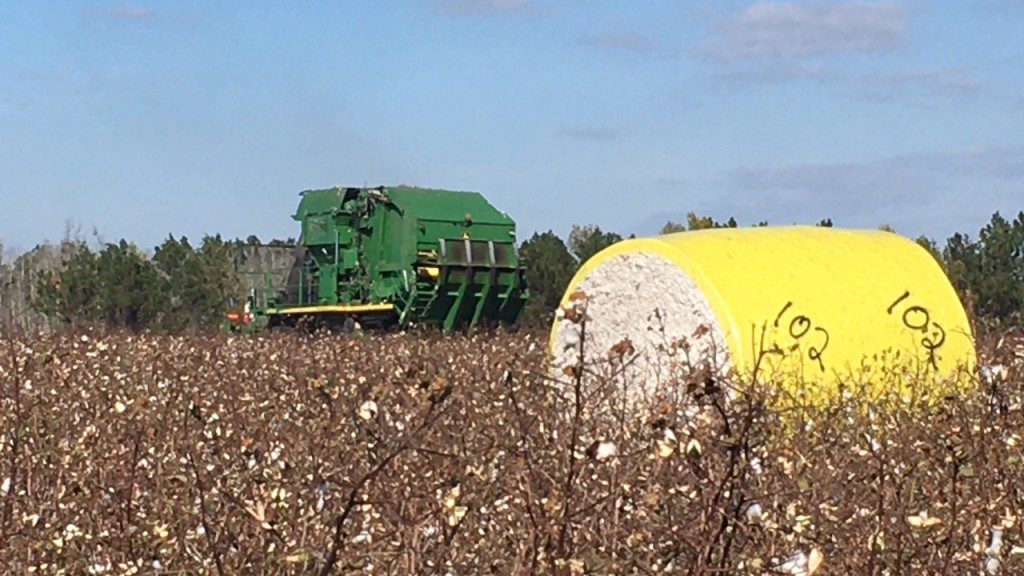Hay & Forages
-
The weather has been interesting the last couple of weeks. There was a report or two of hail last week on the west side of the county. According to the Georgia Weather station network, 4 inches of rainfall was recorded at the Sunbelt Ag Expo weather station for the week of June 24-30, 2025. …
-
Posted in: Hay & Forages
-
This past week, corn growers are finishing up planting this year’s crop. Cotton and peanut growers are preparing to begin this planting season. Growers are burning down fields and finishing deep turning peanut ground. Rain was observed the first part of last week. Fungicide applications were applied to small grains. According to the drought monitor…
Posted in: Corn, Cotton, Entolomogy, Hay & Forages, Peanuts, Pecans, Small Grains, Soybeans, weather -
A Pasture to Plate meeting is planned for Thursday, March 27 at the Colquitt County Extension office. This meeting will start at 6 pm. Topics will include forges, meat science and farm to consumer licensing and regulations. If you are interested please contact the Colquitt County Extension office at 229-616-7455. This meeting is sponsored…
-
Current situation: Corn planting is starting around the county. Peanut growers are deep turning in preparation of the new crop. Burndown herbicides are going out on cotton and peanut fields. In a blog post by Pam Knox, earlier this week NOAA released their predictions for what the spring climate will be like. They are calling…
Posted in: Corn, Cotton, Cover Crops, Entolomogy, Hay & Forages, Peanuts, Pecans, Plant Pathology, Small Grains, weather -
The latest drought monitor shows improvement in conditions. The northwest corner of Colquitt County appears to be experiencing some abnormally dry conditions before the weather this past Sunday. The seven-day weather summary is below for the period of March 9-15. Soil temperatures are reaching the mid-60s. Source: Sunbelt Ag Expo location of the UGA Weather…
-
In this issue: What are the current soil temps? Colquitt County Forage Production Update, Corn Burndown, Cotton Acreage Survey, Prowl on forages, Influence of storage length on the nutritive value of baleage, EVALUATING FUNGICIDES FOR MANAGEMENT OF AREOLATE MILDEW IN GEORGIA. What are the current soil temps? Soil temperatures for three depths are listed below…
Posted in: Corn, Cotton, Cover Crops, Hay & Forages, Livestock, Marketing, Meetings, Plant Pathology, Small Grains, weather, Weed Managment -
Up Coming Meetings: Colquitt County Cotton Production Meeting with be held on Monday, February 17, 2025 at the Colquitt County Extension office. This meeting will start at 12:00PM. Drs. Phillip Roberts, Camp Hand and Taylor Singleton will be our guest speakers. The Colquitt County Forage Production Update will be held on Tuesday, February 25, 2025…
-
In this issue: Up coming production meetings, Corn Short Course, Drought monitor, Farmer of the Year, winter annuals, and peanut questions. The Vegetable and Pecan Production updates are scheduled for this week. If you are interested in attending, please rsvp using the qr code or call the office. The 2025 UGA Corn Short Course will…
-
In this issue: Production meetings! The snow this past week. Peanut variety yield data. Cold weather and your winter grazing. Pruning pecan trees after year five. We have two production meetings in Colquitt County next week!! The Colquitt County Peanut meeting is scheduled for Monday, Jan 27, 2025 at noon. The Colquitt County Row Crop…
Posted in: Beef Cattle, Cotton, GA Cattlemen’s, Hay & Forages, Livestock, Meetings, Peanuts, Pecans, Small Grains
